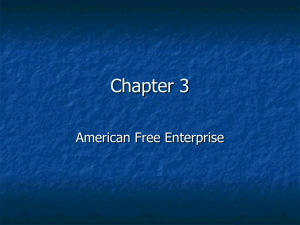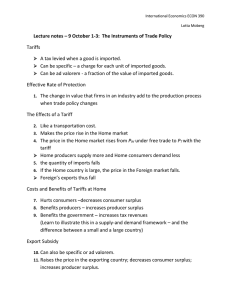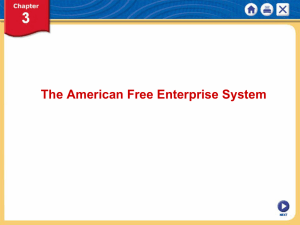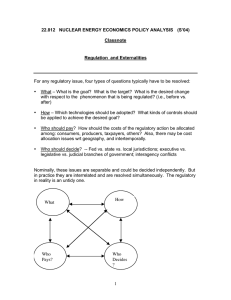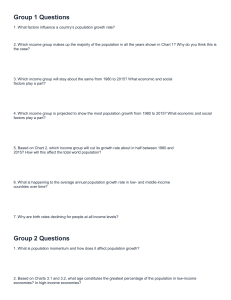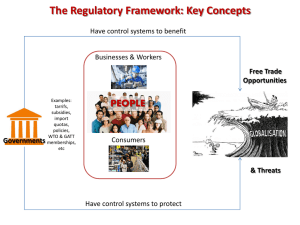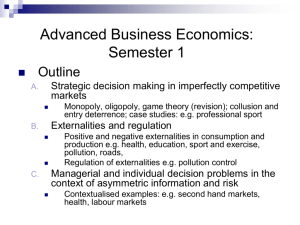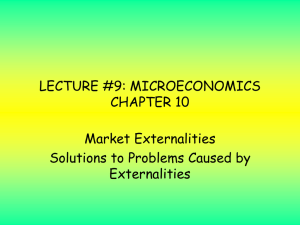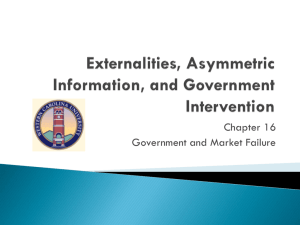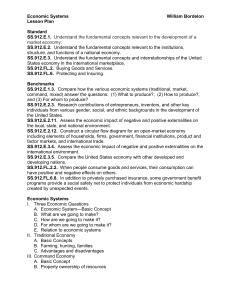Lecture notes 12 October 20 - 22: Controversies in
advertisement
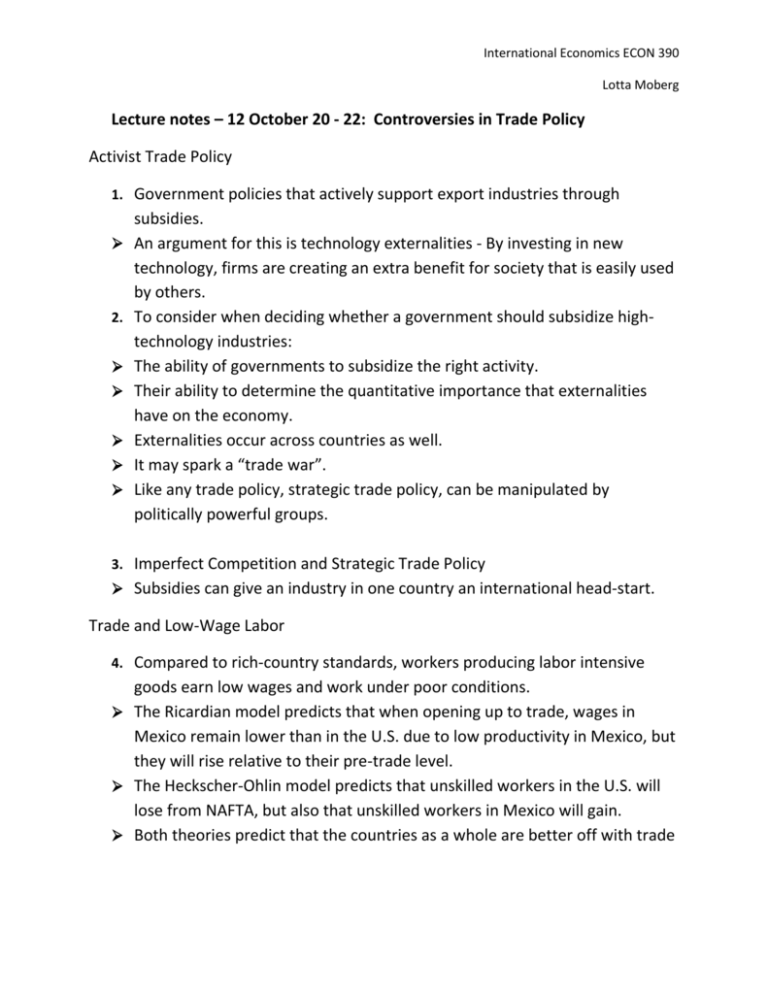
International Economics ECON 390 Lotta Moberg Lecture notes – 12 October 20 - 22: Controversies in Trade Policy Activist Trade Policy 1. Government policies that actively support export industries through 2. subsidies. An argument for this is technology externalities - By investing in new technology, firms are creating an extra benefit for society that is easily used by others. To consider when deciding whether a government should subsidize hightechnology industries: The ability of governments to subsidize the right activity. Their ability to determine the quantitative importance that externalities have on the economy. Externalities occur across countries as well. It may spark a “trade war”. Like any trade policy, strategic trade policy, can be manipulated by politically powerful groups. 3. Imperfect Competition and Strategic Trade Policy Subsidies can give an industry in one country an international head-start. Trade and Low-Wage Labor 4. Compared to rich-country standards, workers producing labor intensive goods earn low wages and work under poor conditions. The Ricardian model predicts that when opening up to trade, wages in Mexico remain lower than in the U.S. due to low productivity in Mexico, but they will rise relative to their pre-trade level. The Heckscher-Ohlin model predicts that unskilled workers in the U.S. will lose from NAFTA, but also that unskilled workers in Mexico will gain. Both theories predict that the countries as a whole are better off with trade International Economics ECON 390 Lotta Moberg Some labor activists want to include labor standards in trade negotiations 5. International standards can however be used as a protectionist policy or a basis for lawsuits when domestic producers do not meet them. 6. Standards set by high-income countries may be expensive for low- and middle-income producers. 7. A better policy may be a system that makes information about wages and working conditions available to consumers. Products can then be certified as made with acceptable wage rates and working conditions. Trade and the Environment 8. Compared to rich-country standards, environmental standards are lax in low- and middle- income countries. 9. This does not mean, however, that trade with poorer countries hurts the environment, since consumption and production in the absence of trade also degrade the environment. 10. Some people want to include environmental standards in trade negotiations. But these could also be used as a protectionist policy or a basis for lawsuits. Standards set by high-income countries are expensive for low- and middleincome producers. 11. Trade > Growth > Pollusion. But we like growth, and growth eventually leads to a better environment: The environmental Kuznets curve is the inverted “U-shaped” relationship between environmental degradation and income per person. 12. Pollution havens are places where an economic activity that is subject to strict environmental controls in some countries is sold to other countries with less strict regulation. Yet, there is evidence that pollution havens are insignificant relative to the pollution that occurs outside international trade.

